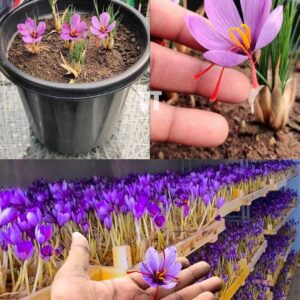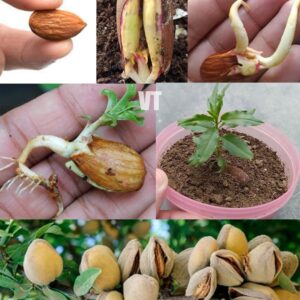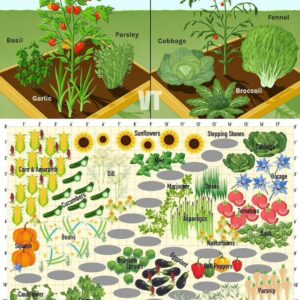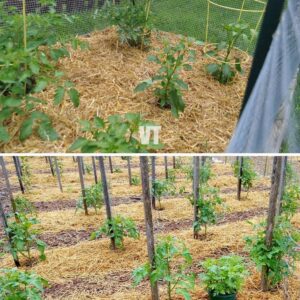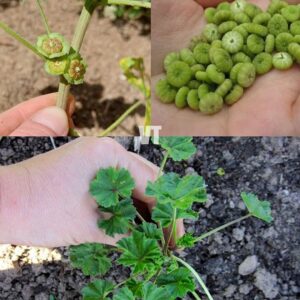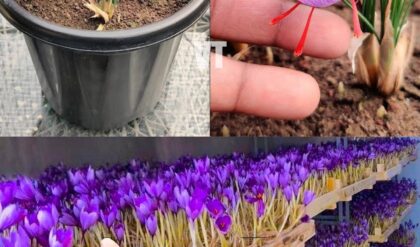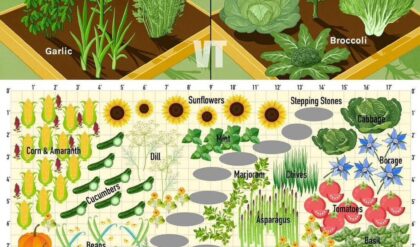A potager, or a French kitchen garden, intertwines beauty with purpose, blending ornamental and edible plants in a harmonious space. This type of garden is both a visual feast and a source of fresh produce. Here’s a step-by-step guide to creating your own potager, transforming your garden space into a picturesque and productive retreat.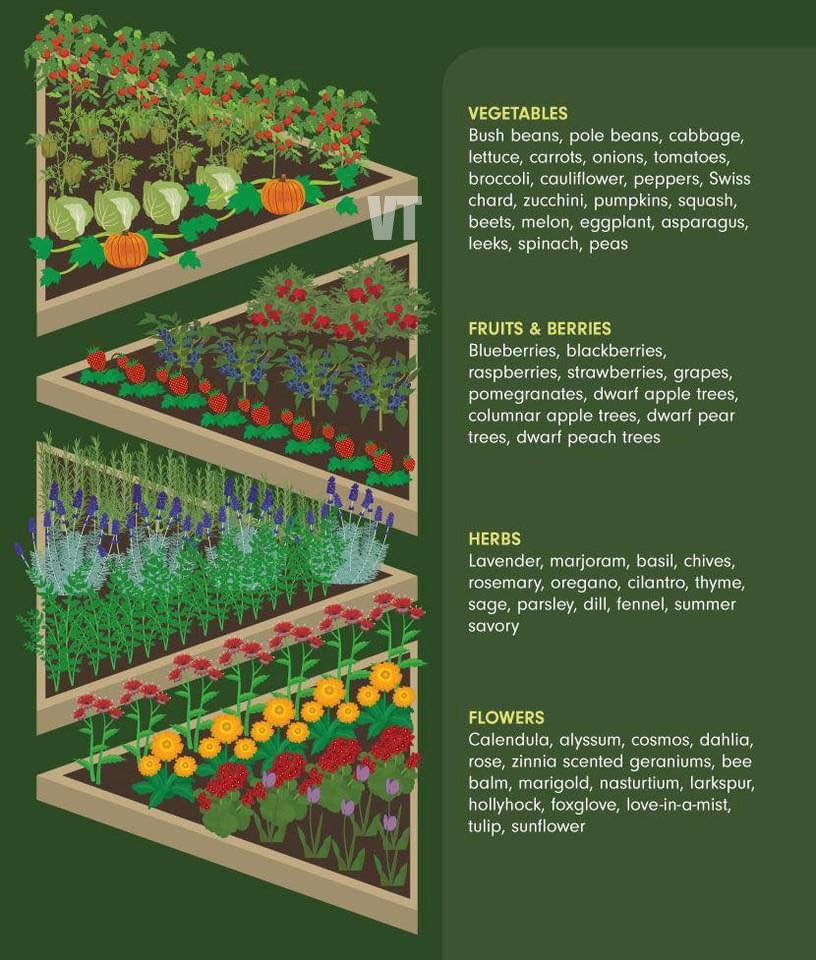
Step 1: Planning Your Potager
1.1. Choose the Location
Select a spot that receives at least six hours of sunlight daily. Proximity to your kitchen is ideal for easy harvesting.
1.2. Design the Layout
Traditional potagers have a symmetrical layout, often in a square or rectangular shape, divided into equal-sized beds with pathways in between.
1.3. Plan for Rotation
To maintain soil health and reduce pests, plan your plantings so you can rotate crops each season.
Step 2: Preparing the Site
2.1. Clear the Area
Remove weeds, stones, and any debris from the area. Ensure it’s a blank canvas for your potager.
2.2. Improve the Soil
Add compost and organic matter to enrich the soil. Good soil is the foundation of a thriving garden.
2.3. Install Borders and Pathways
Define your garden beds with borders made from wood, stone, or brick. Lay down gravel or bark mulch for the pathways.
Step 3: Selecting Plants
3.1. Choose a Mix of Plants
Combine herbs, vegetables, fruit bushes, edible flowers, and ornamental plants. Consider color, height, and seasonality to ensure a beautiful and productive garden year-round.
3.2. Incorporate Companion Planting
Use companion planting principles to enhance growth, deter pests, and encourage pollination.
Step 4: Planting Your Potager
4.1. Start with Perennials
Plant perennial herbs and flowers first, as they will form the backbone of your garden.
4.2. Add Annuals and Vegetables
After the last frost date, plant your chosen vegetables and annual herbs. Intersperse them with flowers to attract pollinators and beneficial insects.
Step 5: Adding Structural Elements
5.1. Install Supports
Add trellises, stakes, or obelisks for climbing plants like beans, peas, and flowering vines.
5.2. Create Focal Points
Use elements like birdbaths, sundials, or a central fountain to add character and focal points to your garden.
Step 6: Maintenance
6.1. Regular Care
6.2. Harvest Often
Pick ripe produce frequently to encourage further production. Enjoy the fruits (and vegetables) of your labor in your kitchen!
6.3. Seasonal Adjustments
As seasons change, replace spent plants with season-appropriate varieties to keep your potager productive and attractive year-round.
A potager is more than just a garden; it’s a living artwork that marries aesthetics with functionality. With careful planning, preparation, and love, your potager will provide you with a tranquil space to enjoy nature’s bounty and beauty right in your backyard. Embrace the process, and watch as your French kitchen garden comes to life, providing a feast for the eyes and the table.
Inspired by this? Share the article with your friends!
News
घर पर बर्तनों में केसर उगाना
केसर, जिसे वैज्ञानिक रूप से क्रोकस सैटिवस के नाम से जाना जाता है , केसर क्रोकस फूल के कलंक से प्राप्त एक अत्यधिक मूल्यवान मसाला है। यह अपने चमकीले रंग, अनोखे स्वाद और कई स्वास्थ्य लाभों के लिए प्रसिद्ध है। जबकि इसे…
घर पर बीज से बादाम का पेड़ कैसे उगाएं
घर पर बीज से बादाम का पेड़ उगाना एक फायदेमंद प्रक्रिया हो सकती है जो आपको कई सालों बाद एक सुंदर और फलदार पेड़ प्रदान करेगी। इसे कैसे करें, इस पर एक सामान्य गाइड यहाँ दी गई है: चरण 1:…
टमाटर को खीरे से नफ़रत: साथी रोपण के रहस्यों का खुलासा
बगीचे के गतिशील पारिस्थितिकी तंत्र में, सभी पौधे संगत नहीं होते। साथी पौधों की सदियों पुरानी प्रथा बागवानों के लिए आवश्यक जानकारी प्रदान करती है, उन्हें सिखाती है कि कैसे कुछ पौधों का संयोजन एक दूसरे के विकास में सहायता…
टमाटर की भरपूर फसल उगाना: सफलता के लिए 6 गुप्त सुझाव
टमाटर उगाना सिर्फ़ बागवानी की गतिविधि से कहीं ज़्यादा है; यह कई लोगों के लिए जुनून है। रसीले, पके हुए टमाटरों की भरपूर फ़सल की चाहत बागवानों को बेहतरीन तकनीक और रहस्यों की तलाश करने के लिए प्रेरित करती है।…
द जेंटल जायंट्स: पारंपरिक और आधुनिक कल्याण प्रथाओं में मालवा नेग्लेक्टा और मालवा सिल्वेस्ट्रिस
वनस्पति जगत के विशाल ताने-बाने में, कुछ ही पौधे मानव इतिहास और स्वास्थ्य प्रथाओं में खुद को इतनी सहजता से शामिल कर पाए हैं, जैसे कि मालवा नेग्लेक्टा और मालवा सिल्वेस्ट्रिस, जिन्हें आमतौर पर क्रमशः कॉमन मैलो और हाई मैलो…
भरपूर फसल के लिए टमाटर उगाने के क्रांतिकारी तरीके
टमाटर, बगीचे का गहना, खाने में जितने स्वादिष्ट होते हैं, उगाने में उतने ही फायदेमंद भी होते हैं। हालाँकि, इन स्वादिष्ट फलों को पूरी तरह से उगाने के लिए सिर्फ़ हरियाली की ज़रूरत नहीं होती। इसके लिए रणनीतिक सूझ-बूझ और…
End of content
No more pages to load
